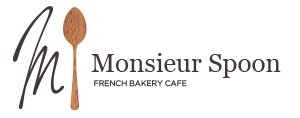1. From Mythic Archetypes to Modern Heroes: An Introduction to Evolving Narratives in Entertainment
Mythic archetypes have long served as foundational symbols in storytelling, shaping how cultures construct their heroes and moral narratives. From the heroic deeds of ancient Greek demigods to contemporary cinematic protagonists, archetypes like the Hero, the Mentor, or the Trickster persist, but their manifestations have evolved significantly over time. This transformation reflects broader cultural shifts, societal values, and the expanding diversity within audiences and creators alike.
The transition from ancient myth to modern hero construction is not merely a change in narrative style but a reflection of how societies perceive identity, morality, and heroism. For instance, classical heroes like Hercules embodied strength and virtue, embodying ideals of the time. Today’s heroes, however, often grapple with internal conflicts and morally ambiguous choices, mirroring contemporary complexities.
Cultural shifts—such as globalization, social justice movements, and technological advancements—have played crucial roles in redefining what it means to be a hero. Modern storytelling increasingly emphasizes relatability, internal struggles, and collective efforts, diverging from the singular, often divine, hero archetype of the past. This evolving narrative landscape invites us to explore how mythic roots continue to influence and inspire contemporary entertainment.
2. The Foundations: Mythic Archetypes and Their Psychological Significance
a. Core Archetypes in Classical Mythology and Their Universal Appeal
Classical mythology is rich with archetypes that serve as universal symbols transcending cultures and eras. Carl Jung identified these as recurring motifs—such as the Hero, the Mother, the Shadow, and the Wise Old Man—that resonate deeply within the collective unconscious. For example, the Greek hero Odysseus exemplifies cunning and resilience, qualities admired across civilizations.
b. Psychological Interpretation: Carl Jung’s Perspective on Archetypes in Storytelling
Jung argued that archetypes are innate mental structures shaping our perceptions and narratives. They act as templates in storytelling, allowing audiences to engage with characters that embody universal human experiences. This psychological lens explains why mythic figures like Hercules or King Arthur evoke profound emotional responses—because they mirror internal psychological conflicts and aspirations.
c. How Archetypes Serve as Templates for Hero Development Across Eras
Throughout history, archetypes have provided frameworks for hero development. Whether as divine figures or flawed protagonists, these templates guide character arcs and moral lessons. Modern narratives adapt these archetypes, adding layers of complexity and internal conflict, thus making them more relatable to contemporary audiences.
3. Modern Reinterpretations: Alterations and Subversions of Classical Archetypes
a. Deconstructing Traditional Archetypes in Contemporary Narratives
Modern storytellers frequently deconstruct traditional archetypes to reflect nuanced realities. For example, the classical hero’s unwavering virtue is challenged in films like The Dark Knight, where Batman’s moral ambiguity prompts audiences to reconsider heroism itself. Such deconstruction allows for more complex and realistic character portrayals.
b. The Rise of Antiheroes and Morally Complex Characters
Antiheroes like Walter White in Breaking Bad exemplify a shift toward morally gray characters who operate outside traditional heroic boundaries. These figures reflect societal frustrations and ethical dilemmas, making narratives more psychologically authentic and engaging.
c. Cultural Diversity and Their Influence on Archetype Evolution
Incorporating diverse cultural mythologies broadens archetypal representations. Characters inspired by African, Asian, and Indigenous mythologies introduce new archetypes and perspectives, enriching the narrative landscape. For example, Marvel’s Shang-Chi draws on Asian martial arts mythos, blending traditional hero archetypes with contemporary storytelling.
4. Beyond the Hero: Expanding the Narrative Spectrum in Modern Entertainment
a. The Rise of Non-Traditional Hero Figures: Villains Turned Heroes and Reluctant Heroes
Modern narratives increasingly feature characters who defy traditional hero archetypes. Instances include villains like Venom, who evolve into sympathetic protagonists, or reluctant heroes such as Frodo Baggins, whose journey is driven by internal conflict rather than innate heroism. These characters reflect a more layered understanding of heroism as a process rather than an innate trait.
b. The Importance of Internal Conflict and Psychological Depth
Characters with rich internal conflicts—like Walter White’s moral descent—provide psychological depth that resonates with audiences. These stories emphasize internal struggles and moral ambiguity, moving beyond the external feats traditionally associated with mythic heroes.
c. Narratives Emphasizing Community, Collaboration, and Collective Heroism
Contemporary stories often highlight collective efforts over individual heroism. Films like The Avengers showcase diverse characters working together, emphasizing that heroism can be a shared, communal endeavor rather than solely an individual pursuit.
5. The Digital Age and New Media: Transforming Mythic Narratives for Contemporary Audiences
a. How Digital Platforms and Interactive Media Reshape Hero Storytelling
Platforms like Netflix, interactive video games, and virtual reality enable immersive storytelling, allowing audiences to experience mythic worlds firsthand. For example, VR adaptations of mythic stories offer experiential engagement, fostering a deeper emotional connection.
b. Transmedia Storytelling: Creating Multi-Layered Mythic Worlds
Transmedia narratives, such as the Marvel Cinematic Universe, expand mythic worlds across movies, comics, TV series, and games. This approach creates a cohesive mythic universe that engages audiences on multiple levels, deepening their connection to archetypal themes.
c. User-Generated Content and the Democratization of Mythic Archetypes
The rise of fan fiction, online forums, and social media fosters a participatory culture where users reimagine and create new mythic characters. This democratization allows diverse voices to contribute to the evolution of mythic archetypes, enriching the cultural dialogue.
6. Cultural Reimaginations: Global Perspectives on Mythic Archetypes and Heroes
a. Cross-Cultural Adaptations and Hybrid Mythologies in Modern Entertainment
Contemporary media often blend mythologies from different cultures to craft hybrid narratives. For instance, the film Black Panther integrates African mythos with modern superhero tropes, fostering cultural appreciation and diversification.
b. The Influence of Non-Western Mythologies on Contemporary Hero Narratives
Non-Western mythologies are increasingly shaping mainstream storytelling. Examples include the incorporation of Japanese yokai spirits in anime or Native American spiritual themes in recent films, broadening the archetypal spectrum and enriching global storytelling.
c. Case Studies of Global Mythic Reinterpretations in Popular Media
| Media | Mythic Inspiration | Description |
|---|---|---|
| Shang-Chi and the Legend of the Ten Rings | Chinese mythological elements | Blends martial arts mythos with contemporary superhero narrative, highlighting Asian cultural motifs. |
| Black Panther | African spiritual and mythic themes | Reimagines African mythologies within a global superhero context, fostering cultural pride. |
| Ni no Kuni (Video Game) | Japanese folklore and yokai | Integrates traditional spirits into a fantasy universe, appealing to global audiences. |
7. The Psychological and Societal Impact of Modern Mythic Heroes
a. How Modern Heroes Influence Individual Identity and Societal Values
Modern mythic heroes serve as mirrors and molders of societal ideals. Characters like Wonder Woman embody empowerment and justice, inspiring individuals to aspire toward these virtues. Psychological studies suggest that engaging with such figures can bolster self-identity and resilience.
b. The Role of Mythic Narratives in Shaping Collective Consciousness Today
Shared mythic stories foster a sense of community and cultural identity. The Marvel universe, for example, functions as a collective myth, reinforcing themes of unity, diversity, and heroism that resonate globally.
c. Ethical Dilemmas and the Reflection of Contemporary Moral Issues Through Hero Stories
Modern narratives often explore ethical dilemmas—such as the use of power, environmental responsibility, and social justice—mirroring societal concerns. These stories provoke reflection and debate, shaping moral frameworks within audiences.
8. Future Trajectories: Evolving Mythic Archetypes in Emerging Entertainment Technologies
a. The Potential of Virtual Reality and AI in Creating New Mythic Narratives
Emerging technologies like VR and AI open avenues for immersive myth-making. Interactive experiences can adapt mythic archetypes dynamically, allowing users to participate in mythic worlds, fostering personalized mythologies that evolve with individual engagement.
b. Predicting Future Shifts in Hero Archetypes Within Evolving Cultural Contexts
As cultures become more interconnected, hero archetypes are likely to become more hybrid and inclusive. Future heroes may embody a blend of traditional traits and modern values like environmental stewardship, cultural pluralism, and digital literacy, reflecting societal evolution.
c. The Ongoing Dialogue Between Ancient Myth and Future Storytelling Innovations
The dialogue persists as creators reinterpret ancient mythic themes through new media. For example, AI-generated stories might reimagine archetypes in ways that honor their roots while addressing contemporary issues, ensuring mythic relevance in future entertainment.
9. Returning to Foundations: Connecting Modern Hero Narratives Back to Mythic Powers
a. How Contemporary Heroes Embody or Challenge Ancient Mythic Themes
Modern heroes often embody themes such as sacrifice, resilience, and justice, echoing ancient myths. Yet, they also challenge traditional notions—for example, by questioning divine authority or emphasizing moral relativity—reflecting societal shifts.
b. The Enduring Relevance of Mythic Powers in Modern Narrative Symbolism
Mythic powers—such as superhuman strength, divine intervention, or mystical artifacts—continue to symbolize inner virtues or societal ideals. Their presence in modern stories underscores a persistent human desire to seek transcendent meaning and empowerment.
c. Reflection on the Continuous Cultural Dialogue Between Past and Present Myths
The ongoing reinterpretation of mythic archetypes demonstrates a dynamic cultural dialogue, where ancient symbols are reshaped to address current realities. This continuity ensures that myth remains a vital, adaptable force shaping human storytelling across ages.


